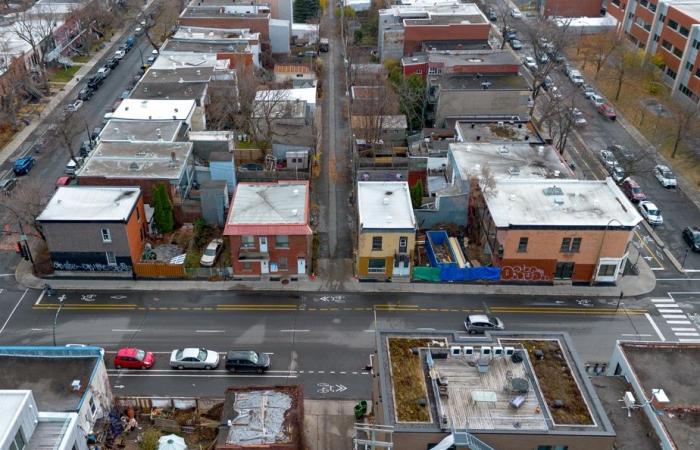Dust, noise and traffic closed for four years: a construction site by the Société de transport de Montréal (STM), which wants to build a mechanical ventilation station in Rosemont–La Petite-Patrie, has residents fearing an ordeal. But above all, the affair threatens a family with expropriation.
Posted at 8:35 p.m.
“They are separating our family,” regrets Trivi Ly. His parents, who arrived in Quebec at the end of the 1970s, have owned 530-532 rue de Bellechasse since 1983. Aged 72 and 73, they live there with their two children, Trivi, 48, and her sister. 50 years old.
The intergenerational household now risks being expropriated by the end of January, with the STM wanting to build a mechanical ventilation station on the duplex land.
This position, which the company says is “nerve” for metro security, will be located between avenue De Chateaubriand and rue De Saint-Vallier. It must replace the current position, which is reaching the end of its useful life. A ventilation station essentially removes hot air from the metro through entrances and ventilation grilles.
PHOTO ALAIN ROBERGE, THE PRESS
The STM assures that “around ten locations were studied before opting for the site located at 532 Bellechasse”.
The work is scheduled to begin in the fall of 2026 and continue until 2030. It will force the closure of the road section throughout the period. The population also fears significant noise consequences due to the demolition work, but also strong impacts on air quality, given the dust.
Mr. Ly claims that the approximately $569,000 offered to his parents is insufficient. “In this area, it’s impossible to find anything at this price. My parents are definitely crazy. [Si ça se produit]I’m going to an apartment and my parents to an RPA. It makes no sense,” he explains.
My mother is so depressed, my father is panicking. At home, the atmosphere is so tense because we are all stressed. I wouldn’t wish this on anyone, because it’s unheard of and inhumane.
Trivi Ly, resident of rue de Bellechasse
Petition launched
Online, a petition wishing to prevent the expropriation of this family had already collected hundreds of signatures since it was posted online on Sunday. A first public consultation session was held on the subject last week.
Several residents went to the Montreal city council on Monday evening to denounce the impacts of this project.
This will lead to detours in the alleys, traffic, risks of accidents for pedestrians and children. In terms of noise, the impact will be considerable when we know that there will be blasting for four years. That also means intense trucking afterwards.
Tristan Desjardins-Drouin, resident of the area
According to him, the chosen location “just doesn’t work.” “It’s a bit as if they had taken the fast lane,” says Mr. Desjardins-Drouin, who affirms that the STM nevertheless has “four other sites which do not require expropriation and which belong to it” nearby. .
Stung, the president of the STM board of directors, Éric Alan Caldwell, retorted that several ventilation stations “are very well integrated into the residential urban fabric.” “There is know-how that has developed to minimize impacts,” he said.
A necessity, says the STM
More generally, the Montreal carrier ensures that “around ten locations were studied before opting for the site located at 532 Bellechasse”.
“Several elements were considered, in particular the technical feasibility in relation to ventilation needs and the objectives of evacuating people; integration into the environment; the costs and constraints of the City and the borough. It’s this location that responds best,” says its spokesperson, Amélie Régis, by email.
She adds that “the initial metro network was built in the 1960s, that some of its equipment and infrastructure must be replaced, and that this is the case of the Bellechasse ventilation station”.
“We must make the equipment and ventilation capacity compliant with the requirements of current fire protection standards, improve the reliability and robustness of the tunnel ventilation system and, finally, bring the sound levels into compliance,” continues Mme Regis.
His group plans to “use clay bricks, as a reminder of the neighborhood”, while building with a small template “which respects the format of neighboring buildings with a residential architectural language”. Finally, “there is no public health issue around the PVM linked to air quality”, notes Mme Regis. “The air quality is good in the metro, which therefore means that the quality of the air leaving the PVMs is good. »







